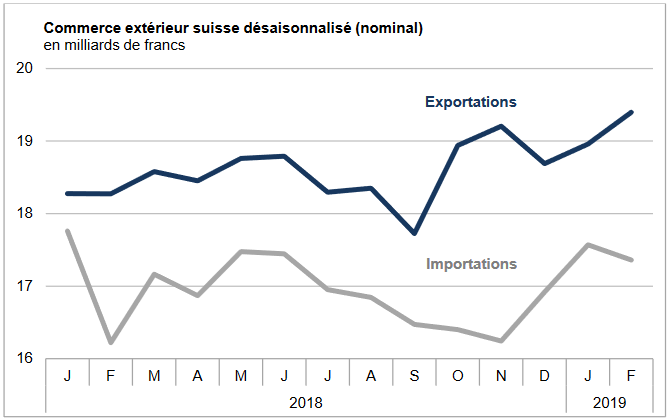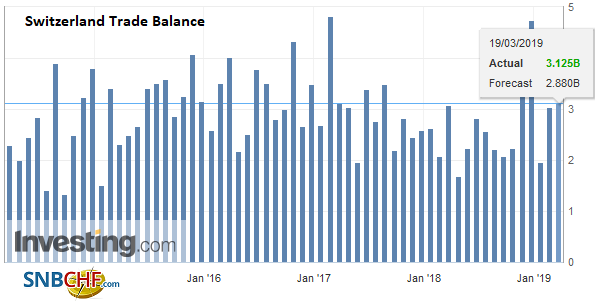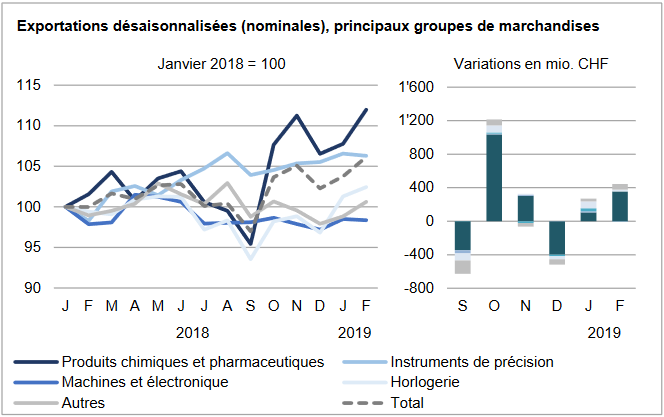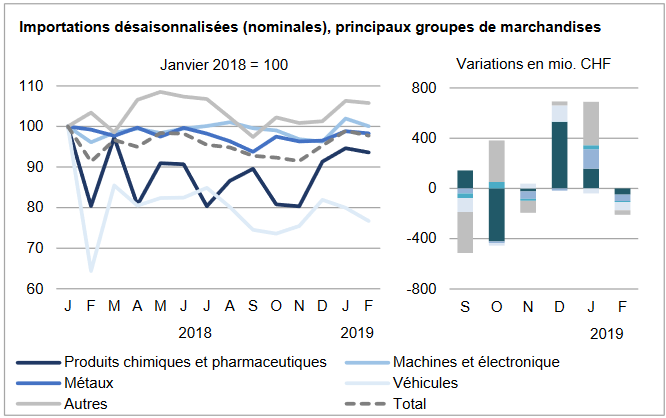We do not like Purchasing Power or Real Effective Exchange Rate (REER) as measurement for currencies. For us, the trade balance decides if a currency is overvalued. Only the trade balance can express productivity gains, while the REER assumes constant productivity in comparison to trade partners. Who has read Michael Pettis, knows that a rising trade surplus may also be caused by a higher savings rate while the trade partners decided to spend more. This is partially true. Recently Europeans started to increase their savings rate, while Americans reduced it. This has led to a rising trade and current surplus for the Europeans. But also to a massive Swiss trade surplus with the United States, that lifted Switzerland on
Topics:
George Dorgan considers the following as important: 2) Swiss and European Macro, Featured, newsletter, Switzerland Exports, Switzerland Exports by Sector, Switzerland Imports, Switzerland Imports by Sector, Switzerland Trade Balance
This could be interesting, too:
Nachrichten Ticker - www.finanzen.ch writes Die Performance der Kryptowährungen in KW 9: Das hat sich bei Bitcoin, Ether & Co. getan
Nachrichten Ticker - www.finanzen.ch writes Wer verbirgt sich hinter der Ethereum-Technologie?
Martin Hartmann writes Eine Analyse nach den Lehren von Milton Friedman
Marc Chandler writes March 2025 Monthly
We do not like Purchasing Power or Real Effective Exchange Rate (REER) as measurement for currencies. For us, the trade balance decides if a currency is overvalued. Only the trade balance can express productivity gains, while the REER assumes constant productivity in comparison to trade partners.
Who has read Michael Pettis, knows that a rising trade surplus may also be caused by a higher savings rate while the trade partners decided to spend more. This is partially true. Recently Europeans started to increase their savings rate, while Americans reduced it. This has led to a rising trade and current surplus for the Europeans. But also to a massive Swiss trade surplus with the United States, that lifted Switzerland on the U.S. currency manipulation watch list.
To control the trade balance against this “savings effect”, economists may look at imports. When imports are rising at the same pace as GDP or consumption, then there is no such “savings effect”.
After the record trade surpluses, the Swiss economy may have turned around: consumption and imports are finally rising more than in 2015 and early 2016. In March the trade surplus got bigger again, still shy of the records in 2016.
Swiss National Bank wants to keep non-profitable sectors alive
Swiss exports are moving more and more toward higher value sectors: away from watches, jewelry and manufacturing towards chemicals and pharmaceuticals. With currency interventions, the SNB is trying to keep sectors alive, that would not survive without interventions.
At the same time, importers keep the currency gains of imported goods and return little to the consumer. This tendency is accentuated by the SNB, that makes the franc weaker.
Texts and Charts from the Swiss customs data release (translated from French).
Exports and Imports YoY DevelopmentIn February 2019, like the previous month, seasonally-adjusted exports increased (+ 2.3%), reaching a record level of 19.4 billion francs. On the other hand, imports fell by 1.2% in one month to 17.4 billion francs. The trade balance shows a surplus of 2.0 billion francs. ▲ Watch exports confirm their dynamism |
Swiss exports and imports, seasonally adjusted (in bn CHF), Febrary 2019(see more posts on Switzerland Exports, Switzerland Imports, ) Source: news.admin.ch - Click to enlarge |
Overall EvolutionIn February 2019, exports continued their momentum of the previous month, progressing in seasonally adjusted terms of 2.3% (real: + 1.3%). Begun in September 2018, the upward trend in the exit has continued. After two dynamic periods, however, imports turned red (-1.2%, real: -3.0%); however, they have clearly evolved above the 17 billion franc mark. The surplus in the trade balance reached 2.0 billion francs. |
Switzerland Trade Balance, February 2019(see more posts on Switzerland Trade Balance, ) Source: Investing.com - Click to enlarge |
ExportsExports to North America reach 4 billion francs With a growth of 3.9% (+356 million francs), chemicals and pharmaceuticals made the largest contribution to export growth. In addition, the sector reached a new monthly peak of 9.5 billion francs and has been on an upward trend since September 2018. Watch sales also show a positive trend, supported by a 1.1% increase in February. In the other goods group, metals shone (+ 3.2%). This sector, however, has fallen slightly since January 2018. The machinery and electronics sector stagnated over a month. Since mid-2018, its monthly turnover has oscillated around 2.8 billion francs. Among the top three markets, exports to North America (+ 8.2%, US) and Europe (+ 1.8%) gained ground; Asia – after its jump of 10.8% in January – has, however, weakened by 1.8%, at a high level. The Asian decline took hold in Singapore, Japan and China (total: -197 million francs). In Europe, sales have varied across countries. The rise of Spain (+347 million, chemistry-pharma) and Ireland contrasted with the fall of Austria (-109 million). Overall, exports to the Old Continent have stagnated since October 2018. |
Swiss Exports per Sector February 2019 vs. 2018(see more posts on Switzerland Exports, Switzerland Exports by Sector, ) Source: news.admin.ch - Click to enlarge |
ImportsImports from the United Arab Emirates fall by 657 million francs Almost all commodity groups saw their imports falter. Those of jewelery and jewelery (other goods groups) plunged 80 million francs against 66 million for those of the vehicles sector. Since the beginning of 2018 the latter has been facing a generally negative trend. Imports of chemicals and pharmaceuticals, the heavyweight at the entrance, contracted by 49 million francs, after their dynamism of the two previous months. In the three main markets, only imports from Europe fared well (+ 1.1%). Shipments from Asia and North America (Canada: -30.7%) fell by 3.9% and 2.9%, respectively. The latter recorded a slight downward trend since January 2018. In Asia, arrivals from the United Arab Emirates (-657 million francs) fell by half over a month, after doubling in the previous two months. Chinese shipments fell by 187 million francs while those of Hong Kong rose by 71 million. On the continent of Europe, the United Kingdom (+341 million) hit hard while Austria slid by one-fifth (-154 million). Imports from Europe have been on the rise since October 2018. |
Swiss Imports per Sector February 2019 vs. 2018(see more posts on Switzerland Imports, Switzerland Imports by Sector, ) Source: news.admin.ch - Click to enlarge |
Tags: Featured,newsletter,Switzerland Exports,Switzerland Exports by Sector,Switzerland Imports,Switzerland Imports by Sector,Switzerland Trade Balance
